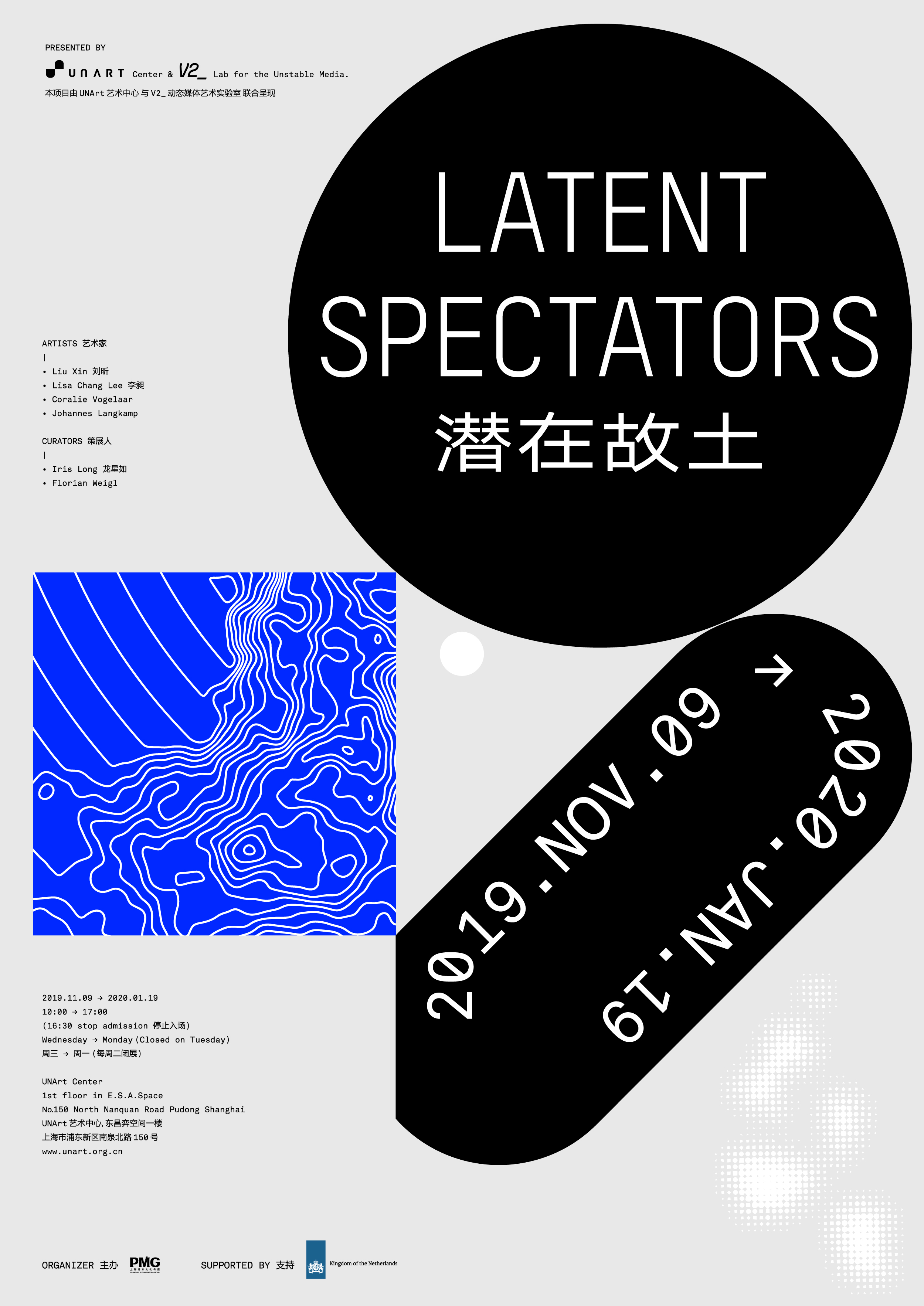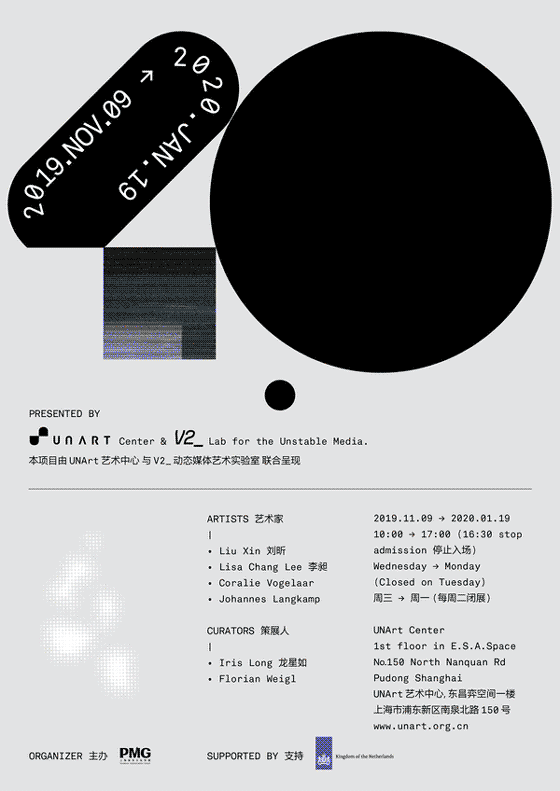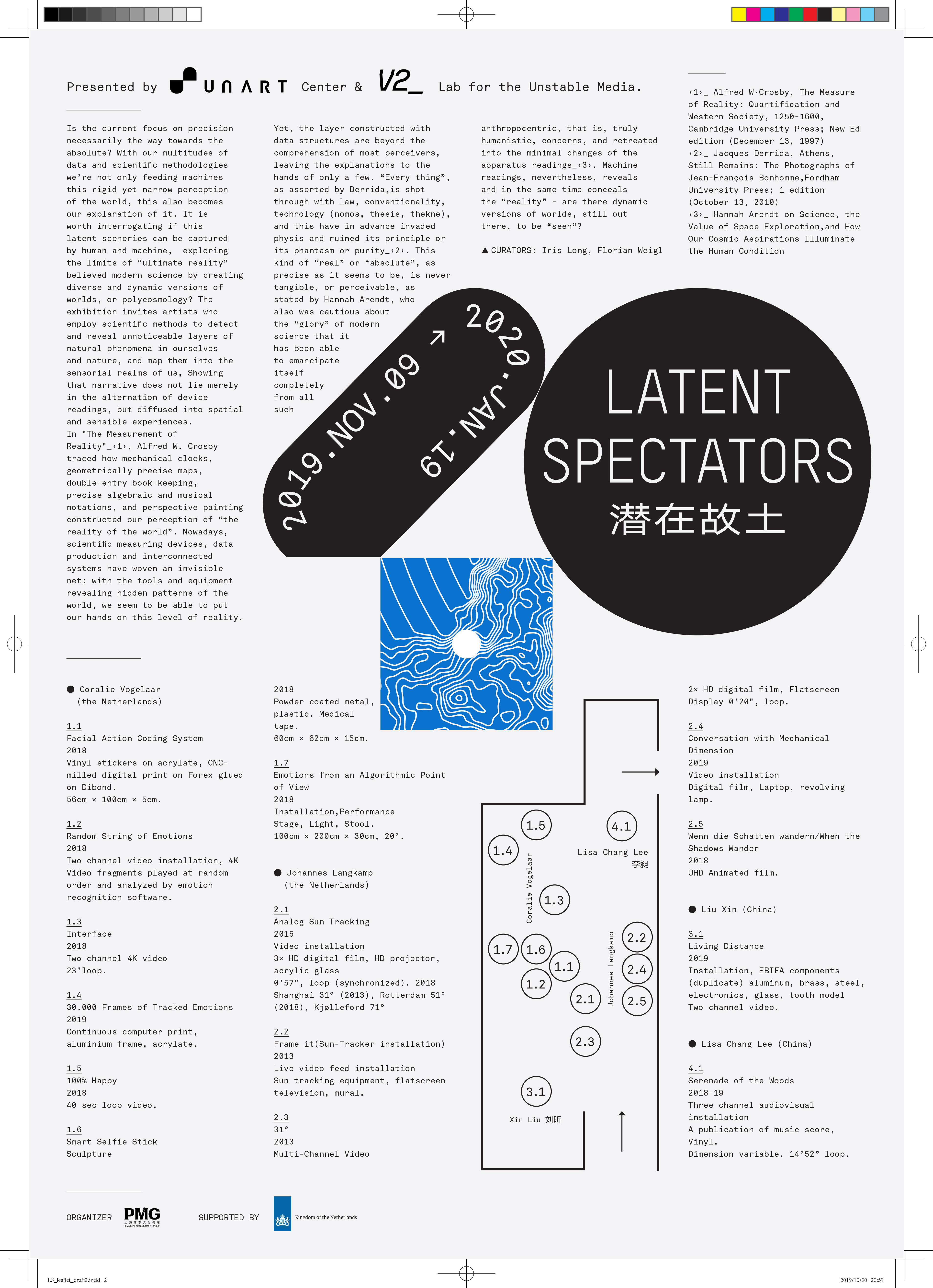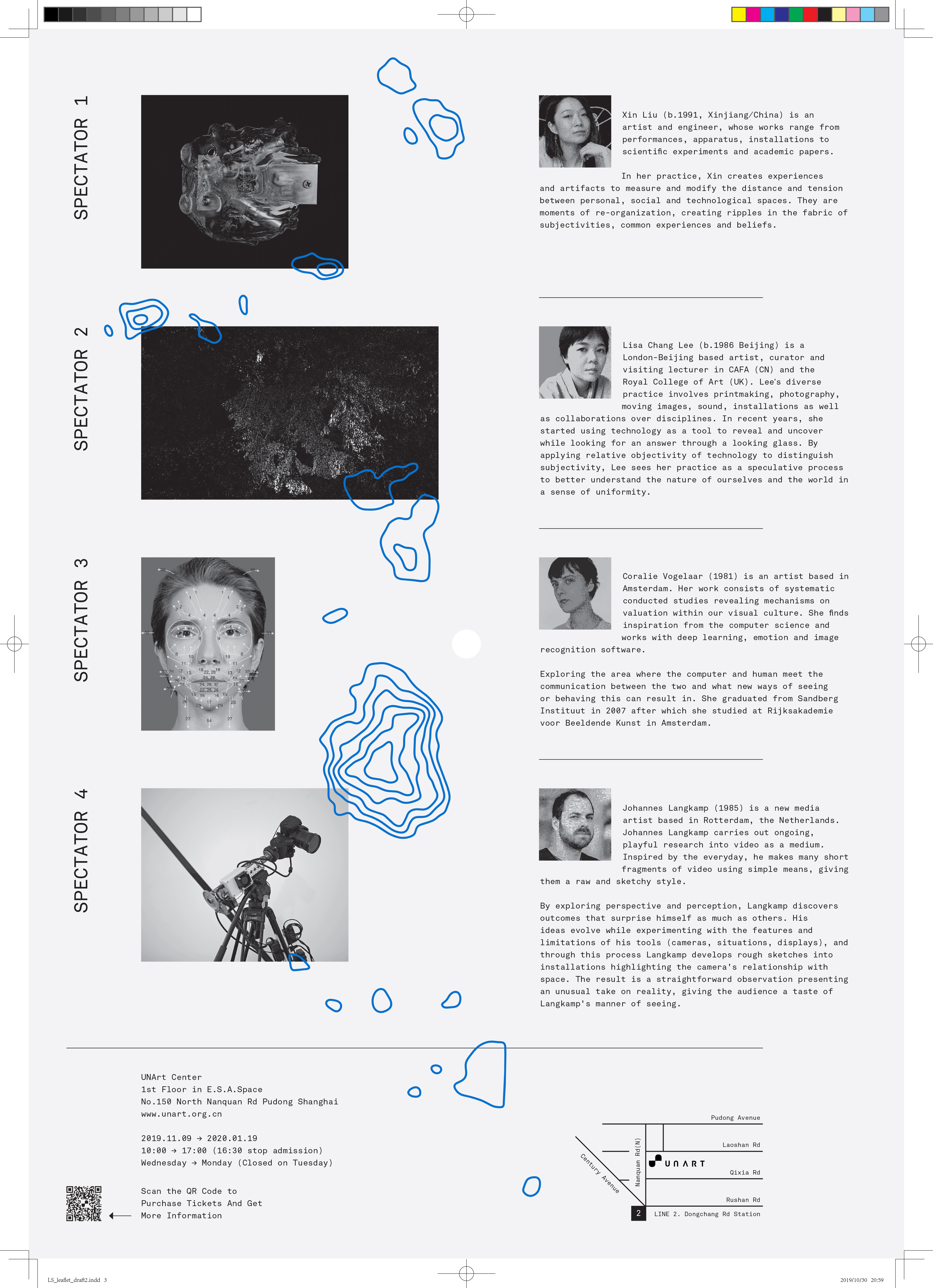Latent Spectators 潜在故土
8 NOV 2019 - 19 JAN 2020


| 策展人 CURATORS |
|---|
| 龙星如 Iris LONG, Florian Weigl |
| 艺术家 ARTISTS |
|---|
| 刘昕 LIU Xin, 李昶, Lisa Chang LEE, Coralie Vogelaar, Johannes Langkamp |
| 主办 ORGANIZER |
|---|
| 上海浦东文化传媒有限公司 UNART |
| 联合发起方 PARNTER |
|---|
阿尔弗雷德·W·克罗斯比在《测量现实》[1]一书中追溯了现代科学对测量的关注,并试图探究机械钟、精准的地图、复式记账、精确的代数、乐谱以及透视绘画等事物如何构造我们对“世界真实”的认知。现如今,科学测量设备、数据生产和互联系统三者已然编织起一张隐形的巨网:随着现代工具和设备不断揭示出世界“隐性规则”抑或超出个体与在地经验的过程,对这些规则和过程的解释也落在少数人的手中,“万物”,如德里达[2]所言,都通过法例(nomos)与技术的孔径所定位,而技术也反过来侵入了自然(physis),并摧毁了自然的幻象。而无论看起来有多精确,这样的“真实”或“绝对”依然虚无缥缈,无从把捉。汉娜·阿伦特[3]曾谨慎质疑过现代科学的“成就”之一——“它已然跳脱了人类中心主义、纯人本主义的观点和把捉”,并退缩为仪器与量表的扰动。读数是对真实的揭示也是遮蔽,在如此的背景之下,我们还能“看见”多少不同版本的世界?


The exhibition begins with a simple question: Can we conceive of different ways of making sense of the world? Ever since modern times we have used data sets and scientific methodologies to analyze and understand reality. We have built computers based on exactly these scientific methodologies to help us analyze massive amounts of data. But are humans and machines likely to capture the same reality? Is there room for different ways of sensing the world, different from the model of modern science?
The artists participating in the exhibition explore subjective and natural phenomena through scientific observation and inspection methods, revealing the parts that are not easily detected. The narrative of this exhibition not only produces readings from the artistic equipment and instruments, but also creates spatial experiences and surprising perceptions.
In the Measurement of Reality[1], Alfred W. Crosby traced how mechanical clocks, geometrically precise maps, double-entry book-keeping, precise algebraic and musical notations, and perspective painting constructed our perception of “the reality of the world”. Nowadays, scientific measuring devices, data production and interconnected systems have woven a latent net: with the tools and equipment revealing hidden patterns of the world, we seem to be able to put our hands on this level of reality. Yet, the layer constructed with data structures are beyond the comprehension of most perceivers, leaving the explanations to the hands of only a few. “Every thing”, as asserted by Derrida,is shot through with law, conventionality, technology (nomos, thesis, thekne), and this have in advance invaded physis and ruined its principle or its phantasm or purity.[2] This kind of “real” or “absolute”, as precise as it seems to be, is never tangible, or perceivable, as stated by Hannah Arendt, who also was cautious about the “glory” of modern science that it has been able to emancipate itself completely from all such anthropocentric, that is, truly humanistic, concerns, and retreated into the minimal changes of the apparatus readings[3]. Machine readings, nevertheless, reveals and in the same time conceals the “reality” - are there dynamic versions of worlds, still out there, to be “seen”?
[1]Alfred W. Crosby,The Measure of Reality: Quantification and Western Society, 1250-1600,Cambridge University Press; New Ed edition (December 13, 1997)
[2]Jacques Derrida, Athens, Still Remains: The Photographs of Jean-François Bonhomme,Fordham University Press; 1 edition (October 13, 2010)å
[3]Hannah Arendt on Science, the Value of Space Exploration,and How Our Cosmic Aspirations Illuminate the Human Condition